Summary
Running with any degree of intensity subjects our feet to stresses that are extremely unusual. When we suffer foot problems such as plantar fasciitis, we are quick to conclude that we must be doing too much exercise and better get some rest. We might also decide that those people who regularly run more than 50 miles each week must have some super-human genetic advantage.
Plantar Fascia
The plantar fascia is a band of tough tissue that connects the front and rear of the foot, like a bowstring, supporting the arch of the foot. Plantar fasciitis, commonly known as “P.F.”, or occasionally called “heel spurs”, occurs when the plantar fascia become inflamed at the point where they attach to the heel. This inflammation causes intense pain on the inside of the heel, especially first thing in the morning, or whenever you have been sitting or lying still for a long period of time without flexing your feet.
You might expect me, as a barefoot runner, to suggest that shoes are entirely at fault. And it’s true that in societies where people go barefoot regularly, they don’t suffer foot problems that are common in modern society. However, my recent experience suggests these problems may be less related to footwear and more a factor of foot activity.
Adaptation
Recently while moving, I cut back on my time-consuming long gentle runs to allow more time for moving and associated errands. I still ran occasional short runs and even a couple of races. Soon I experienced symptoms associated with plantar fasciitis. I also felt minor pains in my left knee and right ankle (more than 30 years ago I severely sprained my left knee and 10 years ago the right ankle).
The traditional explanation for the seemingly weak plantar fascia is that, on an evolutionary scale, we only began to walk upright on two feet recently and there hasn’t been enough time for natural selection to strengthen the fascia sufficiently. Therefore, we are told, “our feet need shoes, and our arches need support!”
The traditional explanation for my pains would be something like, “they are the result of previous injuries”. Which is partially true, except when I am strong, I don’t have these pains. Only when I don’t take the time to run long and slow regularly do I have these pains. And the explanation that it is the endorphins or runner’s high that gets rid of the pain, can’t be correct, or they would disappear on my first long run, rather than gradually over time as I rebuild my strength. Secondly, they would return shortly after finishing any long run. That also is not entirely true (except after an unusually long or hard run).
And plantar fasciitis is so common and crippling that evolution would not have allowed carriers of such a design flaw to become anyone’s ancestors. Nor would evolution have allowed such minor injuries as an ankle or knee sprain to debiliate us for the rest of our lives. And they don’t, IF we get back out and walk and (gradually) run and rebuild ourselves. It’s unbelievable that our ancestors would never sprain an ankle or knee without recovering so they could walk and run without pain!
After I finished the task of moving my household, I gradually resumed my long slow runs and surprisingly the pain began to subside gradually. The more long gentle running I did, the less pain I suffered. It was as if these long slow runs were strengthening my feet and joints! And why not?
I suggest that the weakness of the plantar fascia is, not a lack of adaptation, but a result of reduced physical activity. Or perhaps it is a lack of adaptation … to sitting, especially in chairs. After all, if we support our feet, and our arches, even our bodies all day long, it’s only natural that they will become weakened (atrophy).
Randolph M. Nesse and George C. Williams in their 1994 book “Why We Get Sick” agree with me. Nesse and Williams point out that hunter-gatherers walk for several hours each day. When they aren’t walking they don’t sit in chairs, they squat.
Since exercises that stretch the plantar fascia to make it longer and more resilient seem effective in relieving that problem, it seems that regular squatting, which provides steady gentle stretching of the plantar fasciitis, could serve as a preventative measure (and of course gentle walking and running while bare foot).
More unusual than the short bursts of intense exercise we subject ourselves to, is that most of the day our feet dangle uselessly or are propped up on a stool while we sit in a chair. Perhaps inactivity is one of the most difficult aspects of the modern environment for humans to adapt to.
What to do?
What to do? Sit less, Walk more. Sit even less, squat more. Run hard less, run long and gentle more. Your intense speed runs, including races, should probably be no more than 10% of your total mileage. Since it’s tough to squeeze in time consuming long slow runs in our hectic society, I’ll make a few suggestions.
Don’t wait for elevators I often see young healthy people waiting several minutes for an elevator to take them up one or two floors. In the time they are waiting I easily run up the stairs to my office on the 5th floor.
Don’t drive or bicycle anywhere that is within a 20-minute walk. You can easily waste 5 or ten minutes looking for and walking to and from your parking space or locking up your bicycle. Might as well leave the car and bicycle at home where it is less trouble.
Move closer to work or change jobs so that you are within walking or running distance. When you do run to work, don’t race. The goal is to build up, not break down.
Spend more family time walking together. You may have to cut out some of those TV programs, but you should find communication easier while walking than during commercial breaks.
Try the suggestions that make sense for your life. If none make sense to you, think up a few of your own. While I don’t agree with the whole message of the advertisements, it is very true that sometimes we need to stop making excuses and “Just do it!”
Related Links
Gallery
- Take the opportunity to squat whenever practical
- Take the opportunity to squat whenever practical
- Take the opportunity to squat whenever practical

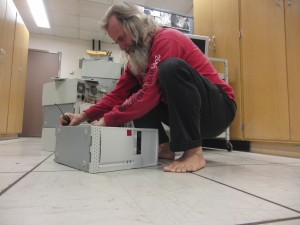
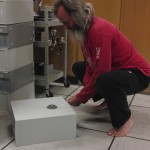
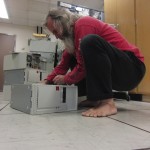
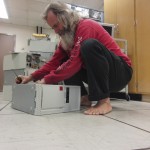
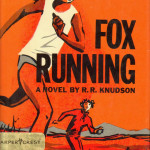
I have struggled with plantar facittis for the past seven years. I stopped running and eventually it healed after casting for six weeks. Since then I had built up to perhaps six miles shod. I recently discovered barefoot running. UNFORTUNATELY plantar facitiis has returned worse than ever. I can not even take ONE STEP without excruciating pain. To THINK of going for a long, slow run brings tears to my eyes! Do you think perhaps your feet are stronger than most so that your transition from moving to longer runs was a good cure for you? I am so afraid to make this worse. I have six children and can’t afford to be in so much pain. I WANT to be a barefooter . . . but I need help. I have gotten deep tissue massage/work done and nothing has helped. I ice, I stretch . . . no change. I now live in a ‘boot’ just so I can hobble about my day to take care of my family.
Desperately searching for help . . .
Hi, I am not sure if you have been able to heal yourself yet but this is my story of how I cured plantar facittis.
I grew up in Zimbabwe and was either barefoot, in flip flops, we called them slip slops, and they were cheap with a very thin sole or later on in rafters (river sandals). When I moved to Ireland I found the cold unbearable, and wore either running shoes, or slippers in the house so I was never barefoot. I gradually was finding it harder and harder to walk on my feet in the morning till it got to the stage that when I got out of bed I was on my tip toes for a good few minutes and the pain was unbelievable. In Africa I had never had foot trouble.
As I had no health insurance I did not go to the doctor, but started searching the internet for an answer. and eventually realised that I had plantar facittis in both feet. For about 12 months I really struggled and was concerned that I was not going to be able to walk to my work. After about 18 months, we had a summer that was reasonably warm, and I purchased a pair of cheap flip flops. I was so shocked that I could hardly walk in them and I then realised that my feet were so weak. I persevered with using the slip slops and began to wear them as much as possible and hey presto my plantar facittis went away, never to come back in the last three years. Although my feet were strong I still had a very sore knee and climbing stairs was difficult. Again internet searching lead me to a method of stretching my calf muscles and he presto my knees are getting better. I still can’t squat, but I am work in on this.
I also now sit at my desk bare feet with my feet in a sand box. http://lifehacker.com/5735033/the-home-office-sandbox This could also help
One of the key fundamentals of barefooting (running or walking) is to listen to the messages from your bare soles, and reduce stress on the foot (which happily, also reduces stress on the rest of the body as well). But in your case, it does sound like you may be putting too much stress on your feet. Be sure to read the how section of this website (several times – it takes a while to absorb new ideas).
http://how.barefootrunning.com
And, yes, of course my feet are probably stronger than most anyone who does not regularly go barefoot. The more we protect our feet, the weaker they will become. Conversely, less protection allows our feet to grow strong (as long as we don’t abuse them – see “How” section again).
Of course, it also takes time to build up. One must build slowly, and begin at the beginning. To paraphrase Covert Baily, “one must begin at the fitness level one is at, and for some, just doing a couple heel raises requires maximum effort.” Others may need to run 10 miles fairly fast to use maximum effort. It’s all relative, for each individual, and constantly changing.
So, forget about walking or running barefoot for now, just practice standing, and relaxing, and occasionally on a rough surface or gravel, just to get a feel of where you’re putting excess stress on your feet. The idea is not to get “up on the toes” (or even the balls of the feet) as we often read. The idea is to evenly distribute stress over the entire surface of the foot, and NOT PUSH up on the fore-foot. And most important, Tension hurts!
Relax, relax, RELAX!
You may have read many places that fore-foot landing is important in barefoot running. But, that is not entirely accurate. First of all, it should be a “fore-foot-FIRST” landing. Sadly many people interprete the former as a “fore-foot-only” landing, which puts excess stress on their feet (which not only can aggravate plantar fasciitis, but often leads to stress fractures (too much cumulative stress over time literally cracks the bones). Most of the people suffering these conditions have never actually gone barefoot, instead they insist they get the same benefit in “barefoot” shoes (right up until they break their feet). The problem is that they could not immediately feel the excess stress they were putting on their feet.
Instead of TRYING to force the foot land fore-foot-first, we only really need to bend our knees, and be careful not to over-reach with our leading foot. The fore-foot will naturally contact the ground first, briefly.
Most people try to exaggerate or force this by stretching their toes out toward the ground, and by pushing-off with their fore-foot on the trailing leg. Both of these actions put excess stress on the foot. When my fore-foot touches the ground initially, my heel is only about a millimeter above it. Many people trying to run in barefoot shoes seem to believe they should be running as if they were wearing high-heel women’s shoes!
And finally, exercise of the feet is essential to your recovery, however that exercise needs to be GENTLE, not abusive. So before you begin that first barefoot step, start at the beginning, with just standing for a moment or so at a time, and build gradually from there.
I’m not certain that all of the above will apply to you, since I can’t see how you’re currently walking/hobbling (and I don’t have much faith in the observance of outsiders, since you will be able to feel so much more emphatically and immediately with your bare soles if you’re doing something painful. But I do hope you can learn enough to get started on your way to curing/improving your condition, at least so you won’t need to hobble around in “boots” all of the time.
I bought the book Barefoot Running Step by Step and your emphasizing relax, relax, bend knees, and the forefoot first landing, then heel and toes, really helped me out. I don’t really agree 100% with Lee Saxby, because I got heel spurs from hiking and walking with a fierce heel strike. So walking barefoot taught me to not do that. Plus your simple info on relaxing calves, and ankles and so on. The posture, starting from the head, shoulders, knees and toes( a kid’s song) and letting the feet follow their natural ways.
I am still working on getting rid of the bone spurs and I have made improvements. My gait has improved. I notice I step down from the train differently than before when I wore thick hiking soles with a lift. My knees bend and this is now automatic. Amazing that my brain adjusted to these “proprioceptive” awareness.
I don’t know. I have to admit I wear a brand of shoes called Sole Runner. They are 1.5mm thick. My foot impression is molded into the thin sole and the sole is practically paper thin at this time. I am always worried that my foot will break through, and suprisingly this has not happened because I land lightly and feel all sharp rocks etc. I also run in them over knarly rocky trails up and down. I have done it also completely barefoot and the senses are definetely more alert. And it feels great.
Wow! I discovered I can run very well barefoot. I do like my sole runner brand shoes which give me plenty of toe room and a bit of protection and for work I need to wear shoes. I don’t really care for VFF, or Zems. The Sole Runner brand are basically as thin as one can get and I don’t mean to advertise.
But yeah, I always think about relaxing the ankles and calves, because I don’t want to injure them- and I notice when I feel calf tightness, all I have to do is bend my knees and try to relax and then the discomfort is immediately gone. I also have flexible arches and what some might consider flatish feet, and now I have stronger arches based on my footprint.
Thanks for sharing your passion.
Michael
by the way, the squatting info is fantastic- thank you for sharing it. I will share it with others.
Thank you so much for this! When in pain we start to doubt the process that has been working great for many years (barefoot running) but coming back and hearing your words is so reassuring. Thank you for all that you do, Ken Bob!
And finally, exercise of the feet is essential to your recovery, however that exercise needs to be GENTLE, not abusive. So before you begin that first barefoot step, start at the beginning, with just standing for a moment or so at a time, and build gradually from there.
More: How.BarefootRunning.com